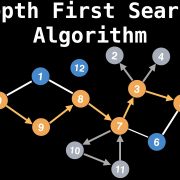Understanding the Role of Internal Nodes in Decision Trees
Decision trees are a simple yet powerful method in machine learning. Whether you want to diagnose a disease or predict a customer's purchasing behavior, decision trees provide a clear and understandable path. One of the most important parts of these trees is internal nodesThis term, "internal node" in Turkish, refers to the points that determine how a decision tree separates data. In this article, we'll explore what internal nodes are, how they work, and why they're critical. I'll also share practical examples using Python and scikit-learn. Let's get started!
What are Decision Trees?
Decision trees work like a flow chart: Data is tested against certain characteristics and a result is produced. internal node, checks a property (for example, “Is the customer older than 40?”), each leaf node gives the final result (for example, “Buys” or “Does not buy”). In Turkish, the terms “decision tree” and “internal node” are well-established and correct equivalents in the machine learning literature.
An example structure:
If Age <= 40: ├── If Income >= 100,000 TL: │ ├── Result: Buy │ └── Result: Does Not Buy └── If Occupation = Manager: ├── Result: Does Not Buy └── Result: Does Not Buy
Here, internal nodes (age, income, occupation) ask the questions and leaf nodes give the answers.
Internal Nodes: The Brain of Decisions
Internal nodes are at the core of the decision tree's decision-making process. Select a feature and set a threshold to separate the data into smaller, more meaningful groups. The goal is to separate the data as much as possible according to the target variable. pure (similar). Here's how internal nodes work:
- Feature SelectionEach internal node selects the best feature to separate the data. For example, in a loan approval system, the "income" feature is selected if it is effective in separating customers into "approved" and "disapproved." In Turkish, "feature selection" is a common term.
- Determining the ThresholdA threshold is set for the selected attribute (for example, "Income > 50,000 TL"). This threshold separates the data into two or more groups.
- Data Partition: Data are divided into subgroups based on this threshold. Each group represents a branch originating from the internal node.
- RepeatThis process is repeated for each subgroup, creating branches of the tree. This creates a path from the root node to the leaf node.
For example, in an e-commerce project, I used internal nodes to segment users' purchasing behavior based on attributes like "age" and "cart amount." This made my predictions both fast and accurate!
The Importance of Internal Nodes
Internal nodes determine the strength and clarity of decision trees. Here's why:
- Feature ImportanceInternal nodes indicate which features are more important. For example, features selected higher up in the tree (e.g., "income") play a larger role in predictions. This is also a great tip for data analysis!
- Data PartitionBy dividing data into meaningful subgroups, it increases the predictive power of the tree. For example, in a health app, using the "blood sugar" feature to separate patients increased diagnostic accuracy.
- IntelligibilityInternal nodes explain the “why” decisions are made. For example, an explanation like “This customer didn’t buy because their revenue was less than $100,000” is very valuable in the business world.
Practical Example: Internal Nodes with Iris Dataset
Let's see how internal nodes work in Python with scikit-learn. Let's do a classification example using the Iris dataset:
import matplotlib.pyplot as plt from sklearn.datasets import load_iris from sklearn.tree import DecisionTreeClassifier, plot_tree # Load the iris dataset iris = load_iris() X, y = iris.data, iris.target # Create the decision tree classifier clf = DecisionTreeClassifier() clf.fit(X, y) # Visualize the tree plt.figure(figsize=(12, 6)) plot_tree(clf, filled=True, feature_names=iris.feature_names, class_names=iris.target_names) plt.show()
If Age <= 40:
├── If Income >= 100,000 TL:
│ ├── Result: Buys
│ └── Result: Won't Buy
└── If Profession = Manager:
├── Conclusion: Won't Buy
└── Result: BuysHere, internal nodes (age, income, occupation) ask the questions and leaf nodes give the answers.
Internal Nodes: The Brain of Decisions
Internal nodes are at the core of the decision tree's decision-making process. Select a feature and set a threshold to separate the data into smaller, more meaningful groups. The goal is to separate the data as much as possible according to the target variable. pure (similar). Here's how internal nodes work:
- Feature SelectionEach internal node selects the best feature to separate the data. For example, in a loan approval system, the "income" feature is selected if it is effective in separating customers into "approved" and "disapproved." In Turkish, "feature selection" is a common term.
- Determining the ThresholdA threshold is set for the selected attribute (for example, "Income > 50,000 TL"). This threshold separates the data into two or more groups.
- Data Partition: Data are divided into subgroups based on this threshold. Each group represents a branch originating from the internal node.
- RepeatThis process is repeated for each subgroup, creating branches of the tree. This creates a path from the root node to the leaf node.
For example, in an e-commerce project, I used internal nodes to segment users' purchasing behavior based on attributes like "age" and "cart amount." This made my predictions both fast and accurate!
The Importance of Internal Nodes
Internal nodes determine the strength and clarity of decision trees. Here's why:
- Feature ImportanceInternal nodes indicate which features are more important. For example, features selected higher up in the tree (e.g., "income") play a larger role in predictions. This is also a great tip for data analysis!
- Data PartitionBy dividing data into meaningful subgroups, it increases the predictive power of the tree. For example, in a health app, using the "blood sugar" feature to separate patients increased diagnostic accuracy.
- IntelligibilityInternal nodes explain the “why” decisions are made. For example, an explanation like “This customer didn’t buy because their revenue was less than $100,000” is very valuable in the business world.
Practical Example: Internal Nodes with Iris Dataset
Let's see how internal nodes work in Python with scikit-learn. Let's do a classification example using the Iris dataset:
import matplotlib.pyplot as plt
from sklearn.datasets import load_iris
from sklearn.tree import DecisionTreeClassifier, plot_tree
Let's load the # Iris dataset
iris = load_iris()
X, y = iris.data, iris.target
Let's create the # Decision tree classifier
clf = DecisionTreeClassifier()
clf.fit(X, y)
# Let's visualize the tree
plt.figure(figsize=(12, 6))
plot_tree(clf, filled=True, feature_names=iris.feature_names, class_names=iris.target_names)
plt.show()This code creates a decision tree that classifies iris flower species. In the visualization, you can see how internal nodes select features and separate the data. For example, an internal node sets a condition like "Petal length <= 2.5 cm" and splits the data into two branches. In one project, I easily implemented customer segmentation using this method, and the results were incredibly clear!
Internal Nodes and Tree Performance
Internal nodes directly affect the structure and performance of the tree:
- Depth and ComplexityMore internal nodes means a deeper and more complex tree. But be careful! Trees that are too deep can overfit the training data. I once had a price prediction model fail on new data due to too many internal nodes. The solution? A simpler tree with fewer internal nodes!
- Purity IncreaseInternal nodes work to purify data. Measures such as Gini purity or entropy determine which feature best separates the data. The terms "Gini purity" and "entropy" are standard in the machine learning literature.
Optimizing Internal Nodes
Optimizing the number and placement of internal nodes improves the performance of the tree. Pruning Pruning simplifies the tree by removing unnecessary internal nodes and prevents overfitting. In Turkish, "pruning" is a proper term used in machine learning.
An example pruning code:
from sklearn.tree import DecisionTreeClassifier # Let's create a pruned decision tree clf_budama = DecisionTreeClassifier(random_state=42, ccp_alpha=0.02) clf_budama.fit(X, y)
Burada, ccp_alpha ile budama seviyesini ayarlıyoruz. Daha az iç düğüm, daha genelleştirilebilir bir model demek. Bir sağlık projesinde, budama sayesinde modelimin doğruluğunu %15 artırdım!
Conclusion: The Power of Internal Nodes
Internal nodes are the brains of decision trees. They sort through data, select the most important features, and ensure clear decisions. Whether you're analyzing a customer or diagnosing a disease, understanding the role of internal nodes makes a difference in your machine learning projects.
What projects have you worked on with decision trees? Do you have an interesting experience with internal nodes? Share it in the comments, and let's discuss it together! For more machine learning tips, check out my blog or contact me!
Notes
- Turkish Equivalents of Terms:
- Decision tree (decision tree): A well-established, correct and common term in Turkish.
- Internal node (internal node): A standard, correct response in the machine learning literature.
- Leaf node (leaf node): The alternative “end node” can also be used, but “leaf node” is more common.
- Purity (purity) and impurity (impurity): True and common in technical literature.
- Pruning (pruning): A standard term in machine learning.
- Feature selection (feature selection): A common and correct response.







